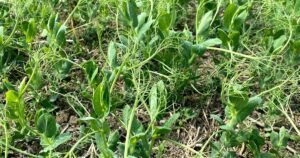
soil amendment.png
Soil Amendment
Definition: A soil amendment is any material added to soil to improve its physical, chemical, or biological properties, enhance plant growth, and optimize soil fertility, structure, and health. Soil amendments can include organic materials, such as compost, manure, and peat, as well as inorganic materials, such as lime, gypsum, and elemental sulfur, which are applied to soil to correct deficiencies, adjust pH levels, and enhance soil quality for agricultural, horticultural, or landscaping purposes.
Description: Soil amendments are used to modify soil properties, enhance nutrient availability, improve soil structure, increase water retention, and promote beneficial microbial activity in soil, thereby creating an optimal growing environment for plants. Soil amendments can be classified into organic amendments, inorganic amendments, and synthetic amendments, depending on their origin, composition, and purpose in soil management practices.
Fall off the barn roof and busted your keister? Life on the farm or ranch can be tough on the bum. Need a break? Laugh it off at FarmerCowboy.com, the #1 farm humor site. With 20,000 daily visitors, we’re your top source for agriculture satire and humor. Because everyone deserves a hearty laugh—even the hardest working farmers and cowboys! Join us and turn those long days into fun tales at FarmerCowboy.com.
Types of Soil Amendments: Several types of soil amendments are commonly used in agriculture, including:
- Organic Amendments: Organic soil amendments include compost, manure, biosolids, peat moss, leaf mold, straw, sawdust, wood chips, and crop residues, which are rich in organic matter, plant nutrients, and beneficial microorganisms that improve soil fertility, structure, and biological activity.
- Inorganic Amendments: Inorganic soil amendments include lime, gypsum, elemental sulfur, rock phosphate, greensand, bone meal, rock dust, and volcanic ash, which provide essential nutrients (e.g., calcium, magnesium, sulfur, phosphorus) and adjust soil pH levels to optimize plant growth and nutrient uptake in acidic or alkaline soils.
- Synthetic Amendments: Synthetic soil amendments include synthetic fertilizers, chemical amendments, soil conditioners, soil stabilizers, wetting agents, and soil amendments containing synthetic chemicals or polymers, which are used to supplement nutrient requirements, correct soil deficiencies, or modify soil properties for specific crops or conditions.
Benefits of Soil Amendments: Soil amendments offer numerous benefits to soil, plants, and ecosystems, including:
- Improved Soil Fertility: Enhancing soil fertility, nutrient availability, and nutrient cycling by providing essential macro- and micronutrients, organic matter, and beneficial microbial populations that support plant growth, root development, and crop productivity.
- Enhanced Soil Structure: Improving soil aggregation, soil porosity, soil aeration, water infiltration, and drainage properties by incorporating organic matter, humus, and soil amendments that increase soil water-holding capacity, root penetration, and microbial habitat in soil.
- Nutrient Management: Balancing soil nutrients, optimizing nutrient ratios, and reducing nutrient losses through leaching, runoff, or volatilization by applying soil amendments with appropriate nutrient compositions, nutrient release rates, and nutrient retention capacities in soil.
- pH Adjustment: Adjusting soil pH levels, correcting soil acidity or alkalinity, and maintaining optimal pH ranges for plant growth, nutrient uptake, and microbial activity by adding lime (calcium carbonate), sulfur, gypsum, or acidic/alkaline soil amendments as needed to modify soil chemistry.
- Disease Suppression: Suppressing soilborne pathogens, pests, nematodes, and weed seeds by incorporating biocontrol agents, microbial inoculants, biofumigants, or disease-resistant plant materials into soil through soil amendments or organic inputs with natural pest-regulating properties.
- Soil Rehabilitation: Rehabilitating degraded soils, contaminated soils, or compacted soils by applying soil amendments, soil conditioners, or phytoremediation techniques that remediate soil pollution, restore soil fertility, and rehabilitate ecosystem functions in polluted or disturbed landscapes.
- Erosion Control: Preventing soil erosion, reducing sedimentation, and stabilizing slopes by using erosion control blankets, erosion control mats, or soil amendments that bind soil particles, enhance soil stability, and promote vegetation establishment on erodible surfaces.
- Environmental Protection: Protecting soil quality, water quality, and air quality by using environmentally friendly soil amendments, organic fertilizers, and sustainable soil management practices that minimize chemical inputs, reduce nutrient runoff, and mitigate environmental impacts on ecosystems.
Soil Amendment Application: Applying soil amendments effectively involves several practices, including:
- Soil Testing: Conducting soil tests, soil analyses, or soil surveys to assess soil fertility, soil pH, nutrient levels, organic matter content, soil texture, and soil structure before selecting appropriate soil amendments and nutrient management strategies.
- Amendment Selection: Choosing suitable soil amendments, organic materials, or inorganic products based on soil test results, crop requirements, nutrient deficiencies, soil amendment recommendations, and agronomic considerations for specific crops or cropping systems.
- Application Rates: Calculating appropriate application rates, application methods, and timing of soil amendments based on soil nutrient requirements, crop nutrient uptake, nutrient application rates, nutrient release rates, and nutrient cycling dynamics in soil.
- Incorporation Methods: Incorporating soil amendments into soil using mechanical tillage, soil mixing, soil blending, or surface application methods to ensure uniform distribution, proper mixing, and effective incorporation of amendments into soil profiles.
- Timing Considerations: Timing soil amendment applications based on crop phenology, planting schedules, crop rotation cycles, soil moisture conditions, weather forecasts, and seasonal trends to optimize nutrient availability, root uptake, and crop responses to soil amendments.
- Monitoring and Evaluation: Monitoring soil fertility changes, nutrient cycling dynamics, crop responses, and environmental impacts of soil amendments over time through soil sampling, plant tissue analysis, crop monitoring, and yield assessments to assess agronomic outcomes and refine nutrient management practices.
Conclusion: Soil amendments play a crucial role in soil management, nutrient management, and crop production by improving soil fertility, soil structure, and plant growth in agricultural systems. By applying appropriate soil amendments, farmers can enhance soil health, optimize nutrient availability, and sustainably manage soil resources for long-term productivity and environmental stewardship.
References:
- Brady, N. C., & Weil, R. R. (2016). The nature and properties of soils (15th ed.). Pearson.
- Magdoff, F., & van Es, H. (2009). Building soils for better crops: Sustainable soil management (3rd ed.). Sustainable Agriculture Research and Education (SARE).
- Brinton, W. F., et al. (2008). Compost use in agriculture. Sustainable Agriculture Research and Education (SARE).
Originally posted 2012-03-30 07:40:29.
Originally posted 2024-06-23 15:10:53.
Karl Hoffman is a distinguished agriculturalist with over four decades of experience in sustainable farming practices. He holds a Ph.D. in Agronomy from Cornell University and has made significant contributions as a professor at Iowa State University. Hoffman’s groundbreaking research on integrated pest management and soil health has revolutionized modern agriculture. As a respected farm journalist, his column “Field Notes with Karl Hoffman” and his blog “The Modern Farmer” provide insightful, practical advice to a global audience. Hoffman’s work with the USDA and the United Nations FAO has enhanced food security worldwide. His awards include the USDA’s Distinguished Service Award and the World Food Prize, reflecting his profound impact on agriculture and sustainability.



